|
 The walk, which the schools have been doing for the
past five years, is like a living wax museum, with the students
bringing real historical characters from the Civil War to life
through their presentations. The walk, which the schools have been doing for the
past five years, is like a living wax museum, with the students
bringing real historical characters from the Civil War to life
through their presentations.
The fifth graders have been studying the Civil War this semester,
and Lincoln Heritage Museum Director Anne Moseley says, “This is a
unique opportunity for students to portray a historical figure they
are learning about in their textbooks at school, and learn history
outside of the classroom.”
Moseley said that this year’s characters included more journalists
and women involved in the war cause, such as war correspondent
Nellie Bly, who reported on asylums after the war, and Hattie
Laughton, a union spy who obtained secret information from the other
side. Moseley enjoys seeing the student’s outfits and the characters
they play.
As the many visitors that included parents and grandparents of the
students walked through both the downstairs and upstairs gallery,
they heard students tell the stories of the historical figures and
their roles in the Civil War.

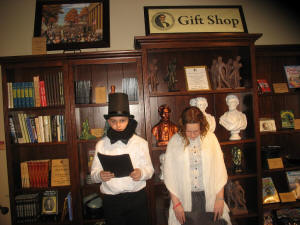
Well-known figures such as Abraham Lincoln and Mary Todd Lincoln

Robert E. Lee, Ulysses S. Grant, Harriet Tubman, and Clara Barton
shared their stories.
As Lincoln spoke, he said he originally assured people he would not
change slavery. However, during the war, Lincoln hired many generals
to help bring an end to slavery.
Union Army General William Tecumseh Sherman distinguished himself in
the Battle of Bull Run.
In addition, there were lesser known figures like Dr. Mary Edwards
Walker, the first woman to be awarded a medal of honor, and Alan
Pinkerton, who headed the Union Intelligence Service and sometimes
acted as Lincoln’s bodyguard.

Photographer Matthew Brady helped document the horrors of the war.

Some students played the soldiers who were injured in
the war and lost arms or legs, and others played the doctors who
treated them.
[to top of second column] |

Soldiers close to starvation said they hunted game
and ate fruit and if they got hurt, some laid out in fields for days
before they were found.
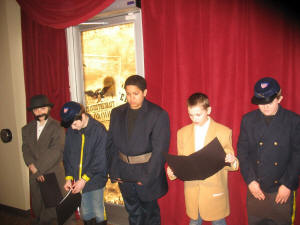
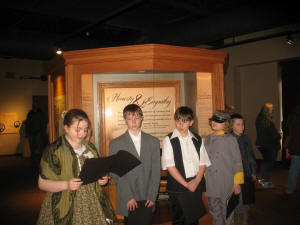

Other students played characters who were Confederate or Union
soldiers, farmers who volunteered for the war, women who disguised
themselves as men and fought in the war, abolitionists fighting to
end slavery, and people who hid the slaves in the Underground
Railroad.
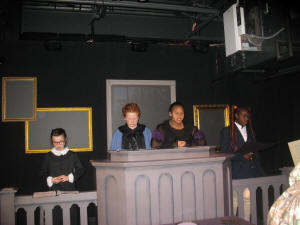
The women who helped with the war effort may not have fought in the
war, but as one character said, “We may not have risked our lives,
but we did what we thought was right to help our country.”
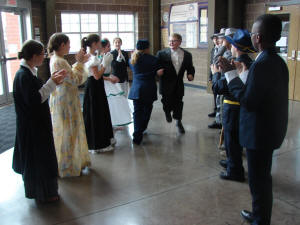
As has become a tradition, students from Central School performed
the Virginia Reel at the end of their performances.

The students did well playing roles from a significant era in
American history and the experience brought history to life for both
the students and the visitors.
[Angela Reiners with photos by Reiners and Curtis Fox]
|